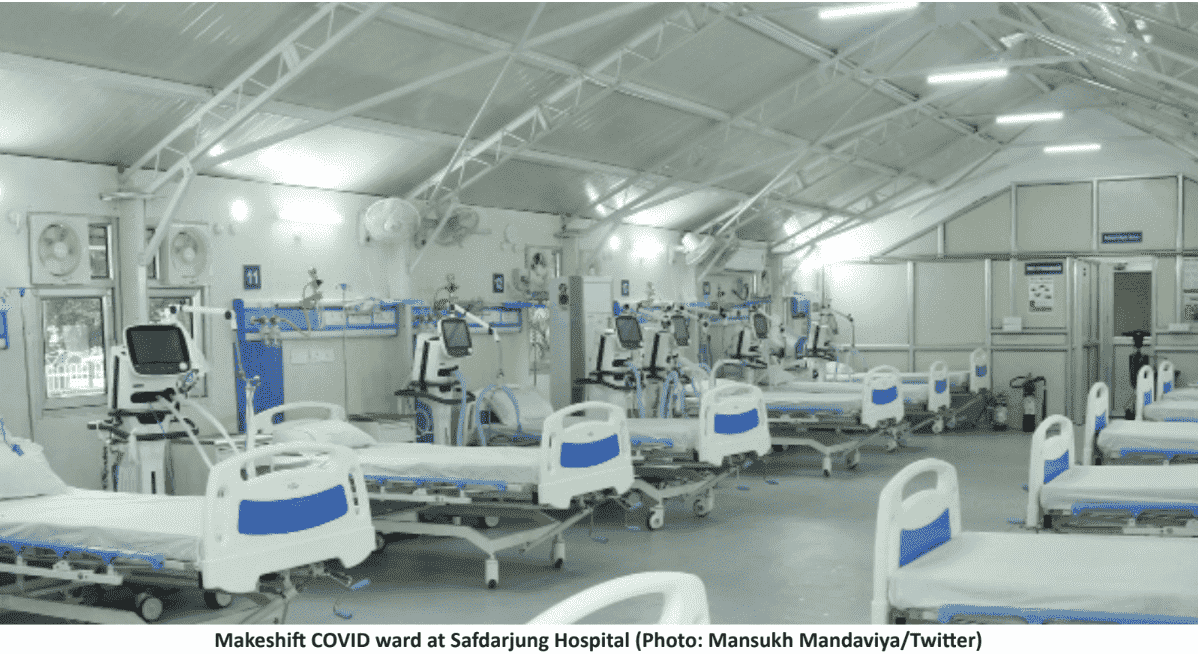
“The greatest wealth is health” – Virgil (Roman Poet) We have all heard this quote at least once in our lifetimes – health is wealth. A healthy body is essential for any task, be it physically or mentally exerting. However, in India, home to approximately 1.4 billion citizens – healthcare remains far from being accessible. Healthcare is defined as “the organised provision of medical care to individuals or a community.” An integral aspect of society, the healthcare industry of a country ensures that its populations remain healthy against disease and death. But with a huge population, the healthcare industry in India has often struggled to sustain it- self and its resources. These issues increased in prominence during the COVID-19 pandemic – is India’s healthcare system a sustainable one? An independent study conducted by The Centre for Disease Dynamics, Economics & Policy (CDDEP) and Princeton University revealed that as of April 2020, there were approximately 25,778 public hospitals and 43,487 private hospitals in India. India had 0.5 public hospital beds per 1,000 people – an alarmingly low number in comparison to global standards. These figures hit the country hard during the second wave of COVID-19, as people struggled to find beds for treatment. The worst-affected state, Maharashtra, saw a scramble for beds and oxygen, as did the national capital Delhi. In April 2021, Maharashtra’s Health Minister, Rajesh Tope, had declared that Mumbai hospitals had used up all but 3% of intensive care beds – an indicator of how the country’s health infrastructure buckled under the weight of the pandemic. As the COVID-19 waves wane and India returns to some semblance of normalcy, there is increased focus on the healthcare industry. On February 1, 2022, Finance Minister Nirmala Sitharaman rolled out the annual Budget, in which the Ministry of Health and Family Welfare was allocated Rs. 86,200.65 crore. While this number seems vast,critics have pointed out that it is just 0.23% higher than the 2021 Budget allocation, which was Rs. 86,000.65 crores. The allocation’s highest chunk was directed towards the National Health Mission, responsible for improving the healthcare systems in rural and urban areas. Mansukh L Mandaviya, the current Union Health Minister, lauded the Budget, stating that healthcare is gradually becoming more accessible to the general public. According to India Brand Equity Foundation (IBEF), India’s healthcare infrastructure is estimated to touch $349.1 billion by FY22. This includes the rise of medical colleges, doctors and nurses, and more facilities that will spread across both the urban and rural parts of the country. A report by NITI Aayog revealed that as of 2019, the government had spent approximately 1.13% of GDP on healthcare services – an extremely inadequate figure in comparison to other countries. The report also highlighted several challenges plaguing the healthcare sector – from the fragmentation of healthcare services and gaps between the rich and poor to less manpower than required for the population. While many pressing problems continue to affect the Indian healthcare industry, Budget increments and schemes such as the Ayushman Bharat Yojana are indications of change – no matter how slow that may be to effect change on the ground and improve India’s health indi- At the end of the day, India is booming with several opportunities related to the healthcare industry. From revisiting Ayurveda, medical tourism, telemedicine and even pharmaceuticals, the country has a long way to go.
cators.
10 May 2022
Krishna Barot